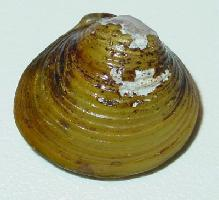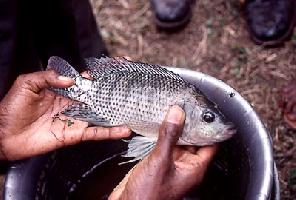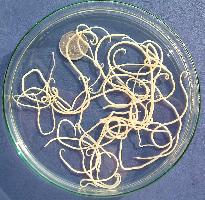
Súlyok és méretek
| Hossz | 3 mm |
|---|
Állatleírás
The Head Louse (Pediculus humanus capitis) is a tiny, parasitic insect that resides on the human scalp, feeding exclusively on human blood several times a day. This obligate ectoparasite is a member of the order Phthiraptera and is closely related to the body louse, Pediculus humanus humanus, differing primarily in its habitat preference—the head louse prefers the warmer environment found near the scalp. Measuring about 2 to 3 millimeters in length, these insects are wingless and have a flattened, elongated body that allows them to navigate effortlessly through human hair.Head lice are adapted for their parasitic lifestyle, with hook-like claws at the end of each of their six legs, which enable them to grasp and move along strands of hair with remarkable agility. Their color can vary from a whitish hue to a darker grey, often blending in with the scalp or hair color of their host, making them difficult to detect. The life cycle of the head louse is composed of three stages: egg (also known as a nit), nymph, and adult.
Nits are oval-shaped and extremely small, about the size of a knot in a thread, and are laid by the female louse at the base of a hair shaft near the scalp, where the warmth is optimal for incubation. These eggs are affixed to the hair with a strong, glue-like substance secreted by the female, making them challenging to remove. Nits hatch into nymphs about 7 to 10 days after being laid. These nymphs are miniature versions of adult lice and must feed on blood to survive. They undergo three molting stages before reaching adulthood in about 7 days.
Adult head lice can live up to 30 days on a host. If dislodged from the host, however, they struggle to survive, typically dying within 1 to 2 days due to the lack of food. During her lifetime, a female louse can lay up to 6 eggs a day, leading to rapid infestations if not addressed.
Head lice infestation, known medically as pediculosis capitis, is a common issue worldwide, particularly among children aged 3 to 11 years, their families, and those who work in close contact with children. It is a myth that head lice infestations are a result of poor hygiene; in fact, lice can infest anyone's hair, regardless of its cleanliness. They are primarily spread through direct head-to-head contact but can also be transmitted via shared personal items like hats, brushes, or headrests, although this is less common.
Symptoms of a head louse infestation include itching and irritation caused by an allergic reaction to the saliva lice inject while feeding. Persistent scratching can lead to secondary bacterial infections. The diagnosis is typically made by visually confirming the presence of nits, nymphs, or adult lice on the scalp.
Management and treatment of head lice involve over-the-counter or prescription medications specifically designed to kill lice, as well as meticulous combing of the hair with a fine-toothed nit comb to remove nits. Preventative measures include educating children on avoiding head-to-head contact, not sharing personal items, and regular checks of the scalp for signs of lice.
In conclusion, the head louse is a fascinating yet troublesome parasite that has coexisted with humans for thousands of years. Despite their small size, the impact of these insects on human well-being is significant, prompting ongoing research into more effective treatments and prevention strategies.
Hasonló állatok
Új állatfotók
Top 10 állat
- Dolphin gull (Leucophaeus scoresbii)
- Japanese macaque (Macaca fuscata)
- Stone loach (Barbatula barbatula)
- Galápagos tortoise (Geochelone nigra complex)
- Russian tortoise (Testudo horsfieldii)
- Diana monkey (Cercopithecus diana)
- Greek tortoise (Testudo graeca)
- Common flying dragon (Draco volans)
- Moustached guenon (Cercopithecus cephus)
- Galápagos penguin (Spheniscus mendiculus)


